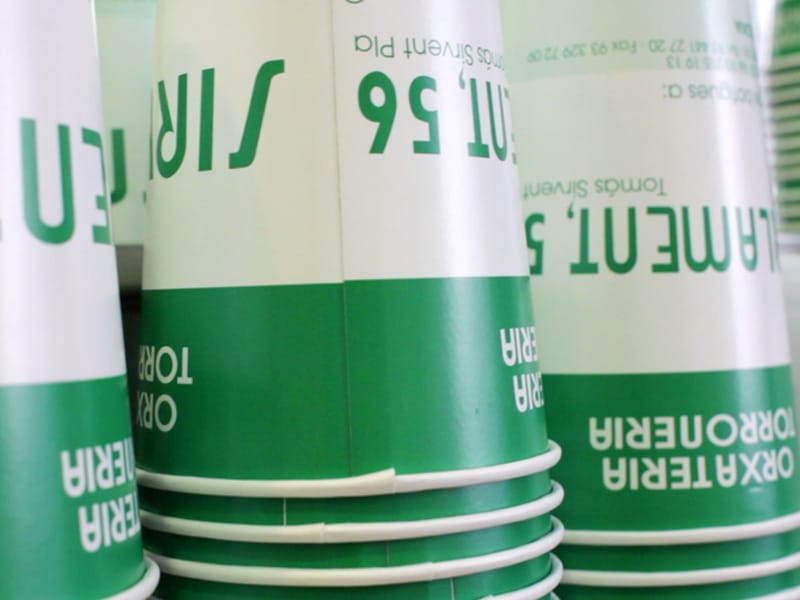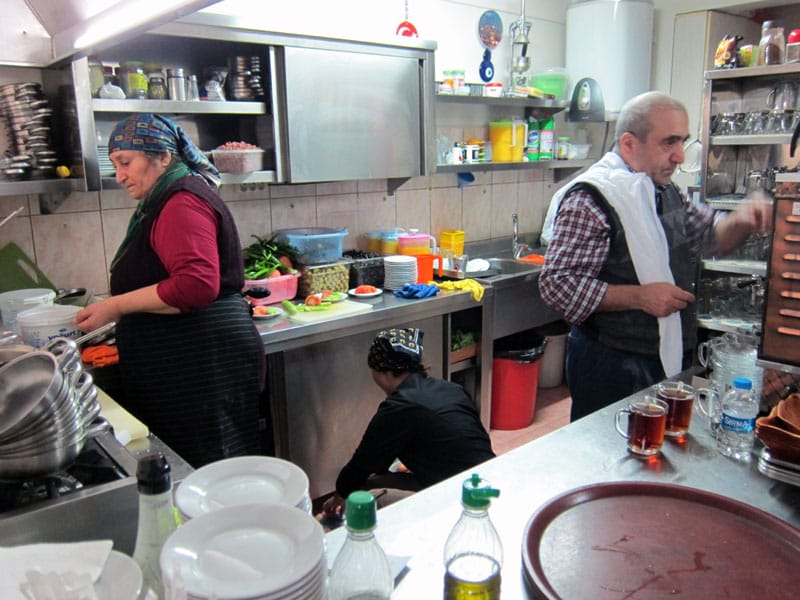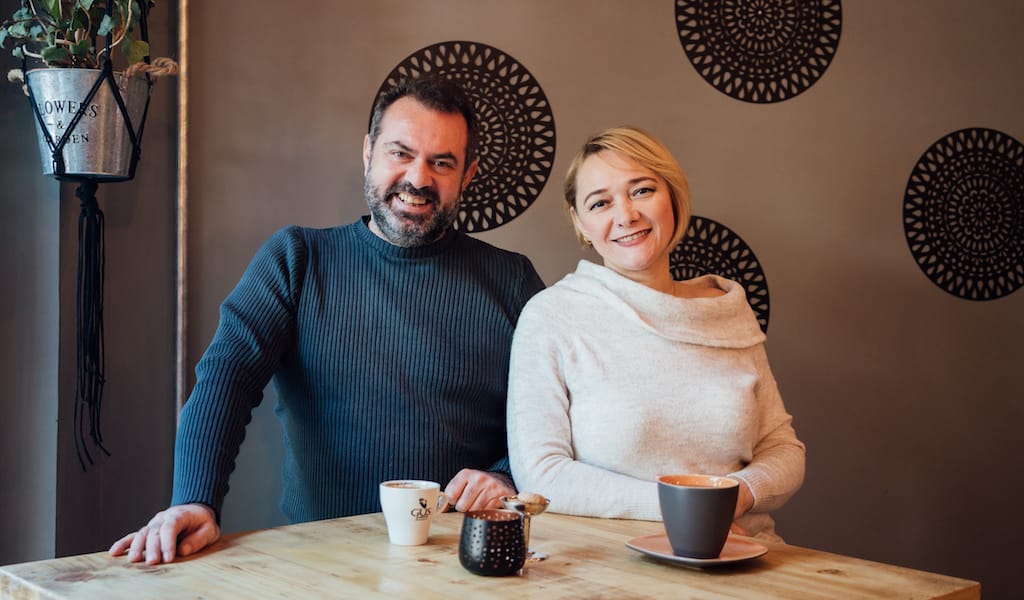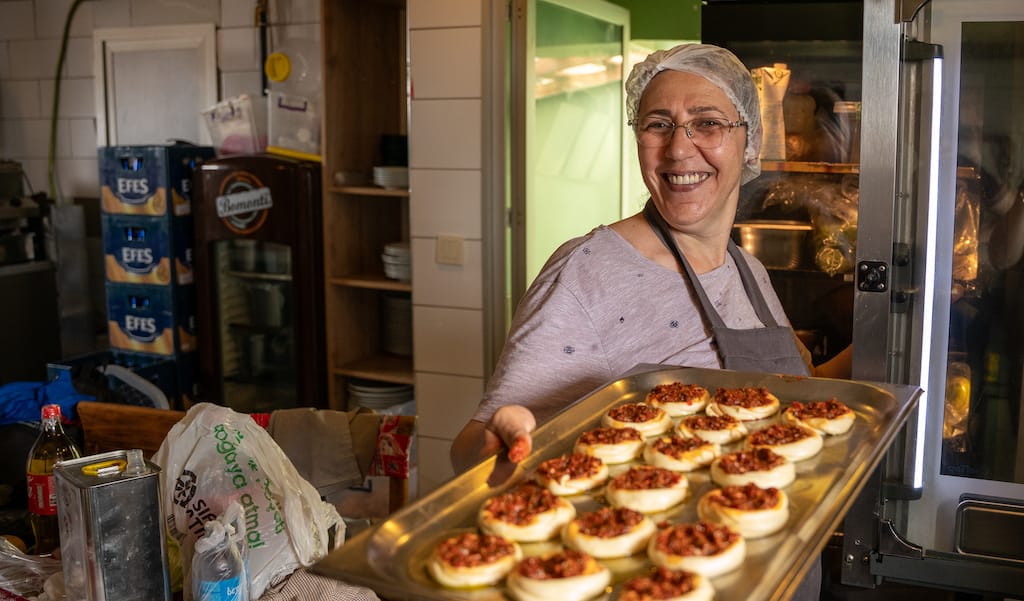Be it kvass in Russia or boza in Turkey, every nation seems to have one of their own, a locally loved drink that to most outsiders comes off as a particularly strange brew. In Spain, that drink is horchata, a unique and deliciously refreshing concoction made from chufas (tigernuts), water and sugar. Served chilled, horchata is beloved all over the peninsula.
In Barcelona, there’s really only one place to try the stuff: Horchatería Sirvent. In fact, no visit to the city is complete without stopping by this Barcelona institution, founded in 1920 by Tomás Sirvent and now managed by members of the third generation of the Sirvent family. The faithful line up here in droves during the summer months, waiting with ticket in hand to sip the best horchata de chufa in town.
Sirvent’s horchata is made the traditional way, that is, as it’s made in Valencia. With its loose, sandy soil and moderate climate, Valencia boasts ideal conditions for growing tigernuts. The tigernut is not actually a nut, but a small tuber whose juice is used to make horchata. The Valencian town of Alboraya is well known for the quality of its horchata. Just as “little green peppers” are associated with Padrón in Galicia, chufas from Alboraya are renowned for their sweet, intense flavor.
To many an acquired taste, horchata goes down sweet with a slightly bitter aftertaste. Catalans routinely triple-park their cars to run in for a Venti-size cup to go or for larger, family-size containers. For those who can’t get enough, Sirvent sells takeaway horchata in 1, 1.5 and 2-liter plastic bottles – priced, respectively, at €4.30 (€3.90 if you bring your own bottle), €6.25 (€5.85) and €8.20 (€7.80). Horchata will keep in the refrigerator for two to three days.
In addition to horchata, Sirvent also offers turrón (a kind of nougat), ice cream and granizados, which are semi-frozen drinks similar to a Slurpee. While the granizado de café we tried was uninspired and too sweet, the granizado de limón was like chunky lemonade, a perfect remedy for the hot sun. Horchata and granizados are sold by the glass: €2.50 for a large, €1.80 for medium and €1.25 for small.
Sirvent is closed for three months during winter and reopens in April following Semana Santa (Easter). The original location at Carrer del Parlament 56 feels more authentic, often like a block party. But for a quick fix, especially for those averse to lines, the Balmes location serves the same artisanal horchata.
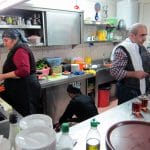 January 21, 2013 Çakmak
January 21, 2013 Çakmak
When it comes to the first meal of the day in Beşiktaş, it’s hard to pass up the […] Posted in Istanbul December 4, 2019 The Spot
December 4, 2019 The Spot
What do shakshuka, kibbeh, nachos, hummus, crepes and a turkey club sandwich have in […] Posted in Athens July 10, 2023 Tables of Antakya: Healing Through Food
July 10, 2023 Tables of Antakya: Healing Through Food
On a mid-June night, one Istanbul kitchen buzzed with Turkish, Arabic and English spoken […] Posted in Istanbul
Hollis DuncanHollis Duncan
Published on August 30, 2012
Related stories
January 21, 2013
IstanbulWhen it comes to the first meal of the day in Beşiktaş, it’s hard to pass up the institution that Pando’s lovely old kaymak shop has become. Yet as much as Pando is the neighborhood’s culinary standard-bearer, there is another side of breakfast in Beşiktaş that feels more contemporary, more real and – somehow –…
December 4, 2019
AthensWhat do shakshuka, kibbeh, nachos, hummus, crepes and a turkey club sandwich have in common? They are all on the menu of The Spot, a charming comfort-food/tapas bar with a global pedigree that opened in October not far from the pedestrianized road that circles the Acropolis. And they are there because they are all personal…
July 10, 2023
Istanbul | By Ingrid Woudwijk
IstanbulOn a mid-June night, one Istanbul kitchen buzzed with Turkish, Arabic and English spoken simultaneously. All women in the kitchen were from Hatay, a province which they – like many other locals – prefer to call Antakya, and which was heavily affected by the earthquakes earlier this year. Delicacies of their hometown filled the pots…







































